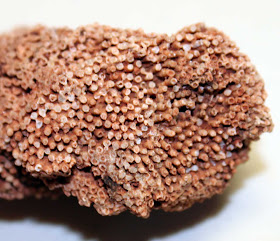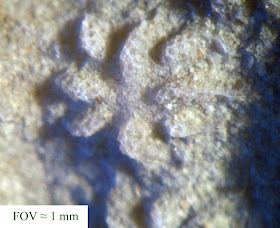The Cornwall Mine of
Lebanon County Pennslyvania, USA was one of the largest iron ore producers in
the eastern United States. Opened in 1732 and operated until the early 1970s
the mine is estimated to have produced over 100 million tons or ore. In addition,
over 60,000 ounces of gold and 400,000 ounces of silver were processed. In June 1972, Hurricane Agnes knocked out the power at the mine thus rendering the pumps unusable. The rains the storm brought flooded the mine shafts and Bethelem Steel decided to close the mines after that.
Micro-mineral specimen of magnetite from the mine. Collected by Milt Leet who was a mining engineer there till mine closed. The book Mineral Collecting in Pennsylvania by Davis M. Lapham and Alan R. Geyer (Pennsylvania Geological Survey 3rd Ed. 1969) describes magnetite found at the mine as "octahedrons, dodecahedrons, plates, massive in ore and along top surface of diabase in small crystals". (page 108)
mindat.org lists 69
different types of minerals found at this mining locality.



































